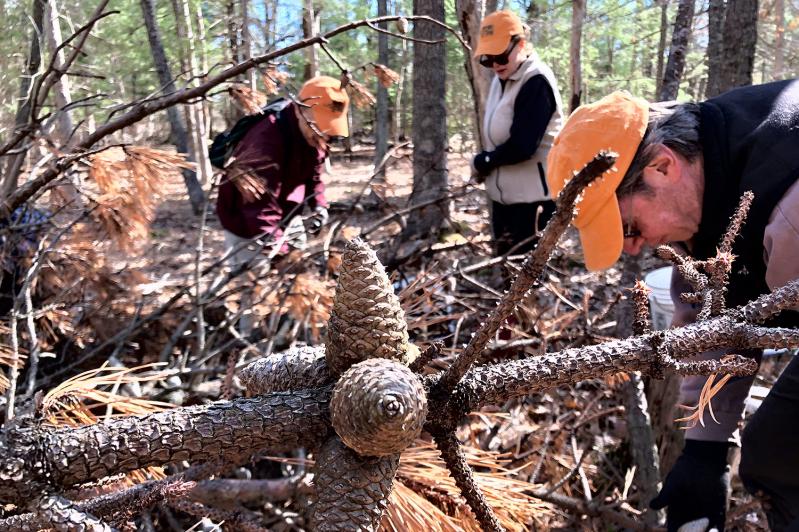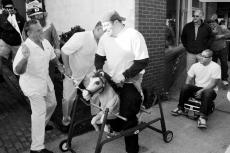Native pines will rise once again on town lands where the trees had been devastated by the southern pine beetle, a pest that is having less and less of an impact in East Hampton each year since it first began wreaking havoc on the trees in the fall of 2017.
Seedlings are currently being cultivated at a state nursery in Saratoga Springs, sprung from seeds harvested from pine cones collected here in the spring of 2018 by town staffers and community volunteers.
East Hampton lost more than 8,000 pine trees in 2017 and another 3,100 trees in 2018. The disaster was so widespread that East Hampton Town Supervisor Peter Van Scoyoc had to declare a state of emergency to handle the invasive insects’ damage. This year, according to Andy Drake, an environmental analyst for East Hampton Town, inspections are ongoing and between 500 and 600 trees have been felled.
“We are going to plant 500 pitch pine seedlings and 500 white pine seedlings at the Curtis Preserve on Swamp Road this spring to encourage regrowth of a species we lost a lot of due to the southern pine beetle damage there,” Mr. Drake said. “We will monitor their growth and if deer browse causes more than 50-percent mortality, we will place 24-inch or taller tree tubes on existing and replacement plantings to mediate deer browse.”
He said half of them will be planted within a 50-foot buffer of the road edge.
The rest will be planted on the interior part of the preserve.
Mr. Van Scoyoc said this week that he is looking forward to the replanting. “It’s a very good idea,” he said.
He himself had to replant many trees on his own property in Northwest Woods, and was even able to rescue trees from a nearby construction site that would otherwise have been bulldozed.
“I got really good at digging up trees and replanting them,” he said. “It’s really interesting to see how nature recovers.”
Mr. Van Scoyoc said the town will do outreach to volunteers once again to get help replanting the pines when the seedlings are ready.
The infant trees are about 6 to 10 inches tall right now, according to David Lee, an associate forester with the New York State Department of Environmental Conservation who manages the Colonel William F. Fox Memorial Saratoga Tree Nursery. They’ll be ready by springtime, he said.
“We have a seed extractory. We heat up the pinecone to get the seed out,” Mr. Lee said this week. “Then we clean up the seed, we do germination tests, and we plant that seed into our seed beds. Pitch pines. we grow them to two to three years of age. We don’t like to release any seedlings under six inches.”
Pines grow more slowly than deciduous species like birches and poplars, but more quickly than hardwoods like white oaks and sugar maples, Mr. Lee said. Pitch pines are “one of the easiest species to germinate,” he said.
“In this case, because you had an invasive insect come through and wipe out the trees, as they attempt to get rid of the problem and eradicate the insect, it’s really important that you try to preserve the genetic makeup of what’s there already,” Mr. Lee said. “The trees have adapted to that site; they can handle the climate on Long Island. If you cut down all the trees that were infected and you go and get seedlings from somewhere else, you’re losing the genetic makeup that was the Long Island pitch pine.”
East Hampton Town’s effort is a smaller-scale version of mass planting efforts in India, China, and Ethiopia, where millions of trees have been replanted in a short amount of time to replenish forests cut down for lumber and agriculture and to attempt to shift course on climate change.
Mr. Drake said the town’s partnership with the state nursery “allows for pitch pine restoration with genetically native seedlings grown from seed collected within the town, thereby ensuring pitch pine remains a dominant tree within our local forests.”




